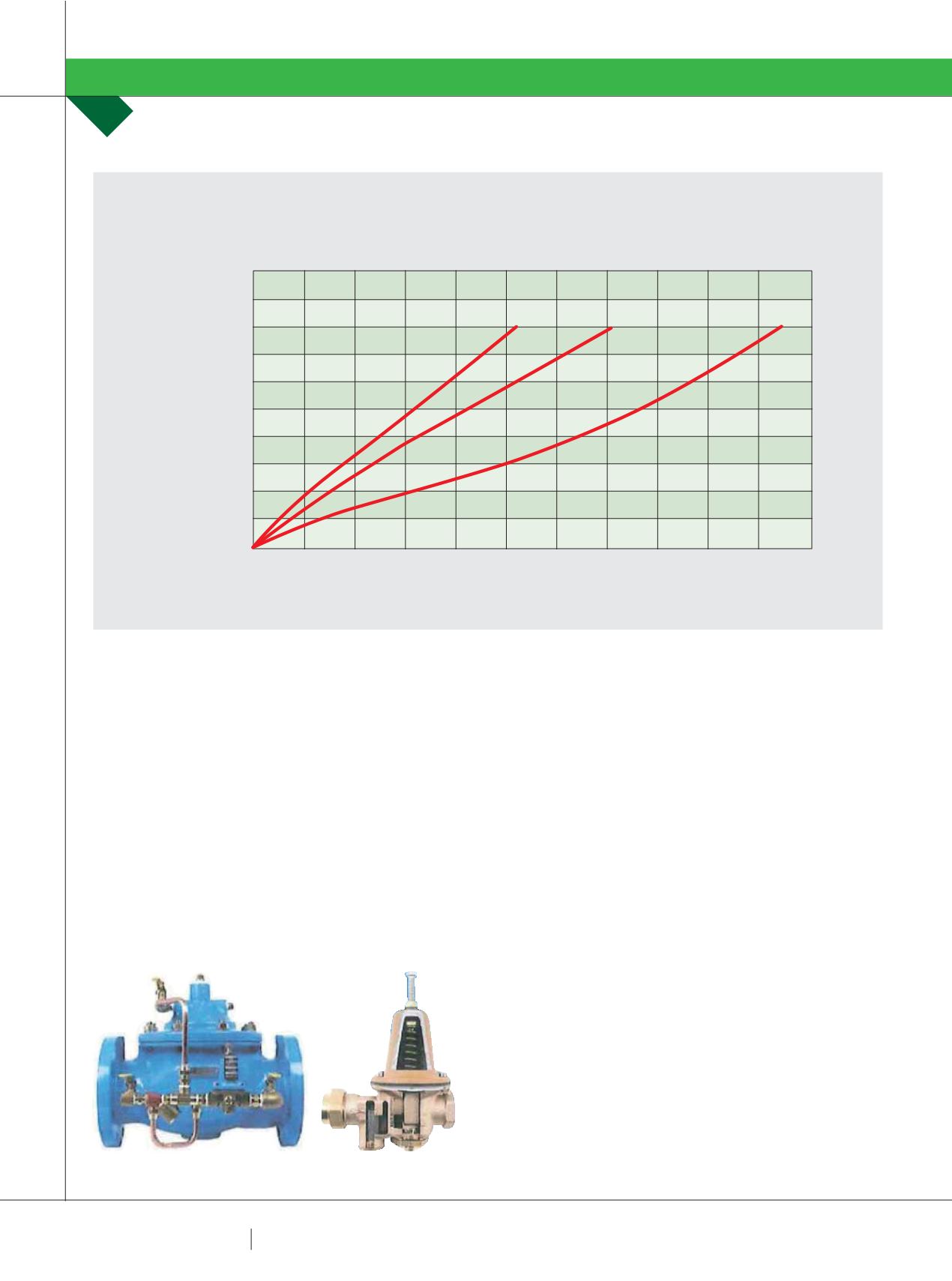

4 2
PLUMBING CONNECTION
SUMMER 2016
If the downstream raises above the set pressure, the
pressure under the diaphragm assembly pushes it up and
the attached seal disc also raises up to decrease the valve
opening. This continues until an equilibrium is reached
between the valve spring tension and the downstream
pressure, thereby maintaining the downstream pressure set
point.
Direct Acting PRVs, especially in sizes of 40mm diameter
and below, are able to effectively control the downstream
set pressure provided they are correctly sized for the flows
passing through them.
These valves require a relatively stiff spring to operate.
There can be issues that may arise with Direct Acting PRVs
due to that stiff spring. This is especially applicable for
valves sized 40mm and above.
FALL OFF IN DOWNSTREAM PRESSURE
SIZES 1¼”, 1½”, 2” (32, 40, 50MM)
10
30
50
70
90
110 gpm
0
5
10
15
20
25
psi
0
34
69
103
138
172
kPa
38
114
190
266
342
418
lpm
REDUCED PRESSURE FALL-OFF
1¼”
1½”
2”
VALVE CONTROL
RUSS DUNNE
A Pilot Operated and Direct Acting PRV.
The effect of spring stiffness – called hysteresis – can be:
1. A rise in the downstream pressure above valve set point,
particularly at low flow or zero flow.
2. A delay in reaction to a rapid change in flow demand from
users, resulting in a drop in the downstream pressure
below its set point.
Charts provided by the Direct Acting PRV manufacturers
detail the ‘fall off’ in the downstream pressure from its set
point, over a range of flows.
As a result, you should be aware – and allow for – the
possible increase in downstream pressure at zero flow, as
well as the possible drop off in downstream pressure at
rapid change in flow, particularly in the larger valve sizes.
Generally this style of valve can be used; however, the
advent of VSD pumps in high rise building applications for
potable water supply has changed the requirements of
pressure reducing valves to deal with rapid changes in
flows. VSD pumps ramp up and down based on pressure and
flow fluctuations within the system and have a determining
effect on what valve is best suited to the application.
The second group of pressure reducing valves are Pressure
reducing valves are “hydraulically actuated diaphragm
control” or more commonly known “Pilot Operated PRV’s”.
These PRVs use a small adjustable pilot valve, plumbed
onto the main valve. The pilot acts as the PRV ‘brain’,
sensing the downstream pressure and regulating the water
















